Mirrorless is the new hype but is it absolutely necessary for budget-conscious photographers? At the moment, the last Canon 6D cameras are heavily discounted and can be found brand new for $999. A great bargain.
I’ve been critical of Canon lately as the company tends to deliver overpriced products with underwhelming features. Some people misunderstood the nature of my criticism; I never said that Canon cameras were bad, I merely said they offered poor value. The latest Canon R is no exception. Priced $300 over the competition (Nikon Z6 and Sony a7 III), it doesn’t even deliver in-body image stabilization (IBIS) or decent 4K videos. But speaking of value, the last Canon 6D boxes still on retailers’ shelves are being dropped for almost half of their introduction price. The 6D might not be the absolute best performer by today’s standard, but it’s definitely the best value at this price if you are looking for a full-frame body.
1. The Best Full Frame Camera under $1,000
There are not many options for brand new full frame cameras under $1,000. You may find cheaper alternatives on the used or refurbished market, but there is always a risk associated with buying items under limited warranty and unknown conditions. The only two options are the Canon 6D and the Sony a7. But the a7 has many shortcomings that were mostly corrected by Sony on the following versions. Battery life is poor, the ergonomics don’t even come close to the 6D, the JPEG rendering is atrocious, and the camera doesn’t output real uncompressed 14 bit raw files. The Sony a7 suffers from many first-generation problems while the Canon 6D is a mature and effective product.
2. Price of a Mid-Range APS-C Camera
At the moment, the 6D and the APS-C Canon 80D are both available for $999. Even though the 80D is a good mid-range APS-C option with tilt-screen and Dual Pixel Auto-Focus (DPAF), it remains a “small sensor” camera. The low light sensitivity and bokeh rendering are much better on the 6D compared to the 80D. Personally, I believe that in certain conditions, gears matters and I usually prefer to shoot with a full frame sensor unless I need the extra crop reach or size reduction. If you are in the market for a mid-range camera, I would recommend the 6D over the 80D as it will be more fun to shoot with. It produces better bokeh and captures cleaner low light images compared to APS-C or Micro Four Third cameras.
3. Excellent Low Light Performance
Even by today’s standard, the high ISO performance of the 6D is good as the sensor is fitted with only 20 mpx. Each pixel is larger and can gather light more effectively, the image looks sharper, and the dynamic range is acceptable at this price. The 6D is the perfect companion for low light photography such as dark events or astrophotography.
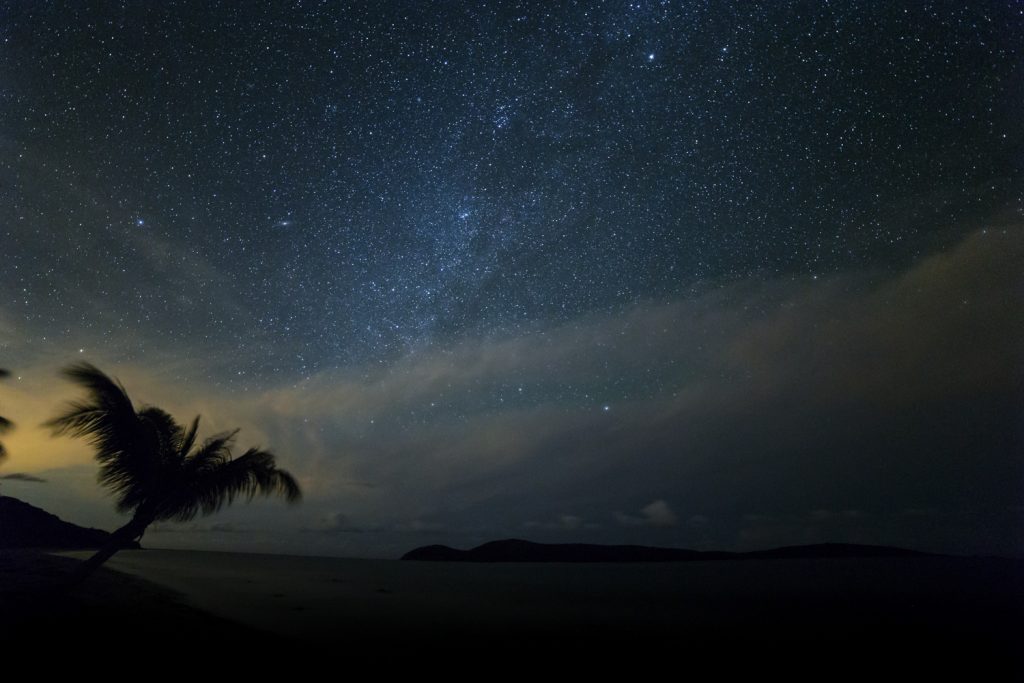
Milky way shot taken in the dead of the night at ISO6400 in Puerto Rico.
4. Great Colors
Color rendition is a very subjective matter, but there seems to be a general thinking that Canon, Nikon, and Fujifilm colors look better straight out of the camera compared to Sony or other brands. I must admit that I like the so-called “color science” of Canon, and the 6D delivers the usual pleasing skin tones albeit some regular warm cast. Sure, anyone can produce a great result with raw files, but I prefer to skip the color fixing steps in my workflow as much as possible to focus on grading.
5. Reliability
As a consumer level camera, the 6D is not weather sealed, but I personally put my 6D cameras through very rigorous conditions over the years, and they still performed flawlessly. From the freezing temperature of the Patagonian glacier to the enduring heat of Dubai summer, this camera never failed. I also used them in the sands of the Atacama desert and the tropical moisture of the Indonesian rain forest. The specification sheet shows a temperature range of 32-104°F / 0-40°C, but I went well above and below that. For instance, I did a two hour time-lapse in Dubai while the thermometer showed 115°F / 46°C in the shade, but my 6D was completely exposed to the sun. It didn’t care and didn’t miss a single shot.
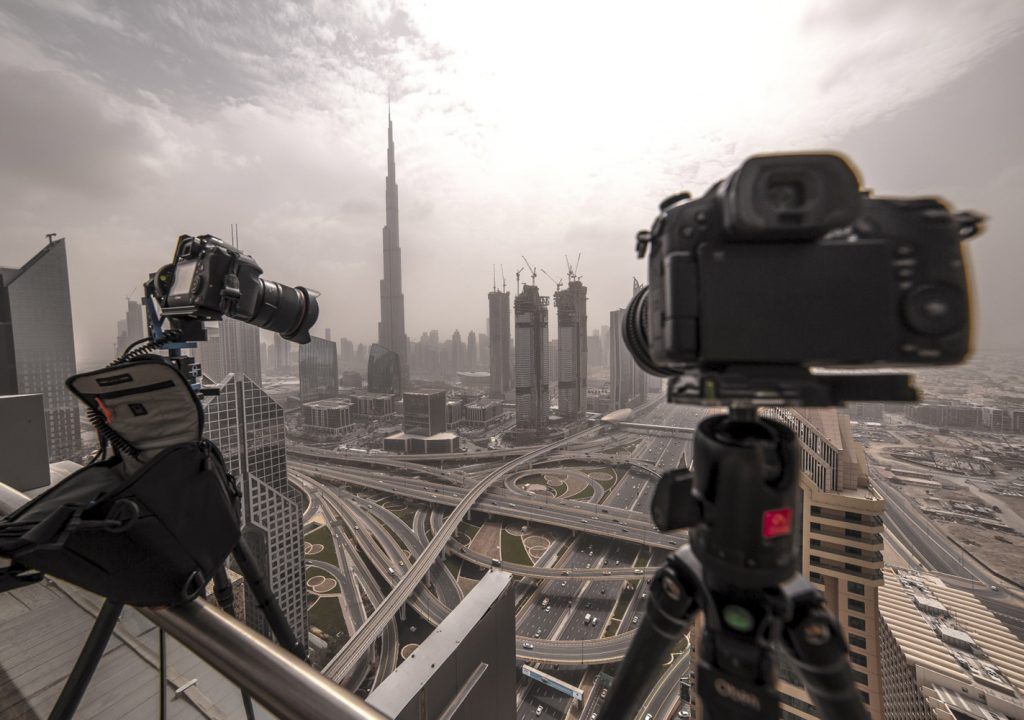
Time-lapse capture under the intense Dubai heat. Credit: Aufmschlau.ch
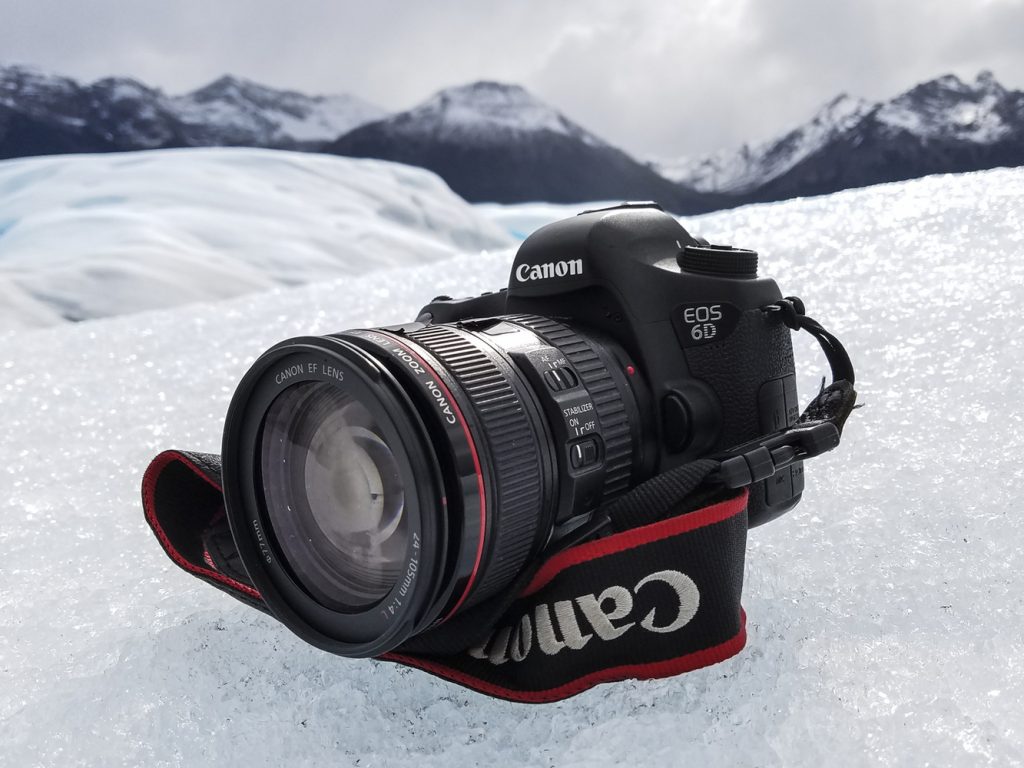
Hiking on the glacier of Patagonia.
As for the shutter, I blew-up the official 100,000 actuations rating. My first camera is over 540,000 actuations while my B and C camera shows 430,000 and 290,000 cycles. Talking about the shutter, the flapping mirror found in front of the sensor offers additional protection against dust deposit. After shooting many time-lapses with mirrorless cameras, I can say that DSLR cameras are much less sensitive than mirrorless when it comes to sensor pollution and dust specs because the sensor is less exposed to the outside world.
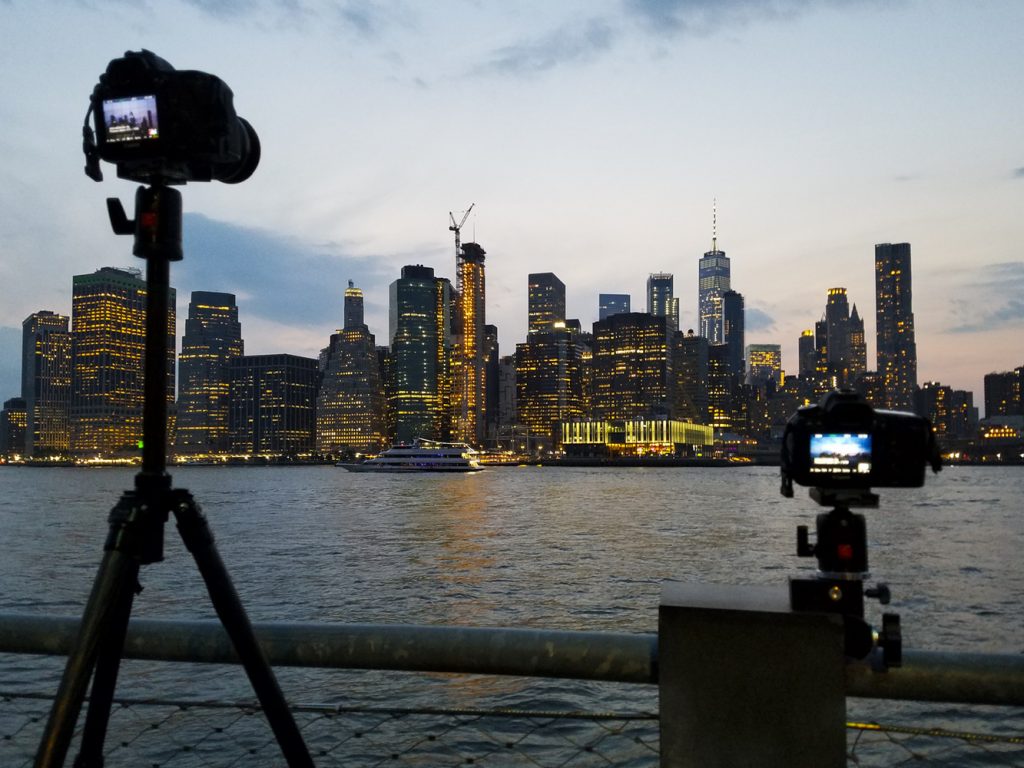
Shooting two time-lapses in New-York City. The robustness of the shutter makes it and ideal companion for this type of work. The mirror also helps to protect the sensor for dust.
6. Intuitive and Easy to Use
The usability is excellent, everything works as it should, and the buttons are well positioned on the camera’s body. The main settings can be adjusted with minimal efforts without roaming through a complex user interface. Unlike Sony or Panasonic, the menus are simple and logically organized. There isn’t a useless gimmick like the M-Fn slide bar found on the latest Canon R camera. The 6D is just a functional body.
7. Lightweight
It may not seem much, but the 6D is 4.2 ounces (120 grams) lighter than the 5D Mark IV. This weight difference actually matters when you have to carry two or three cameras for a long shooting day. I know several wedding and event photographers in my entourage who picked the 6D as their B or C camera because of its lighter footprint.

The small and lightweight body of the Canon 6D helps to mount it on sliders.
8. Compatible with Magic Lantern
Magic Lantern is an alternative firmware developed by a team of generous hackers. The firmware is free and can be easily installed in the camera over the existing software layer. Some say that Magic Lantern might be dangerous to install, but I never experienced an issue over the years despite using this hack on all my Canon cameras (5D Mark III, T4i, 6Ds). I also never heard of someone actually “bricking” his/her camera around me. Finally, the unofficial firmware can be removed easily and leaves no trace behind so there is no risk to void the warranty.
As for the firmware itself, it’s impossible to list all the features implemented by the developers, but this little hack adds a ton of functionalties to the camera such as focus stacking, intervalometer, raw video, zebra and peaking, advanced histogram, and so on. Simply put, Magic Lantern opens new creative possibilities and allows to save money as you don’t need to buy additional accessories or update to the next higher-end camera to produce similar results.
Unfortunately, the Magic Lantern team was not able to hack the latest Canon camera models yet. The Canon 6D and 5D Mark III were the last full frame cameras compatible with this firmware.
9. Great Selection of Lenses
Canon finally introduced its first full frame mirrorless camera last year with a new lens mount standard. Clearly, the days of the DSLR EF mount are counted as the latest rumors suggest that Canon may only release R lenses this year. Perhaps Canon will unveil a few more EF glasses in the future, but this standard is destined to be replaced by the R mount sooner than later. The same happened 30 years ago when the EF mount took over the FD mount.
Therefore, buying a 6D camera might not be the wisest choice when the manufacturer is moving away from its legacy mount. This is true but the current selection of R lenses is very limited, and they tend to be expensive. However, the range of EF lenses is probably the largest in the world. Quality EF glasses are very affordable and third part manufacturers like Sigma, Tokina, Samyang, or Tamron offer additional alternatives. Plus, EF lenses are not lost if you decide to upgrade later to a mirrorless camera as Canon introduced several adapters to fit EF optics on R cameras. Unlike third part adapters like the Metabones Speed Booster, the Canon adapter is a native product designed to deliver optimal compatibility without glitches or AF issues. In fact, one of the adapters offers a smart feature as you can slide in filter inside the adapter. This feature is very interesting for ultra-wide angle photography where the front holder and 150mm filters are particularly bulky, annoying to install, and expensive.
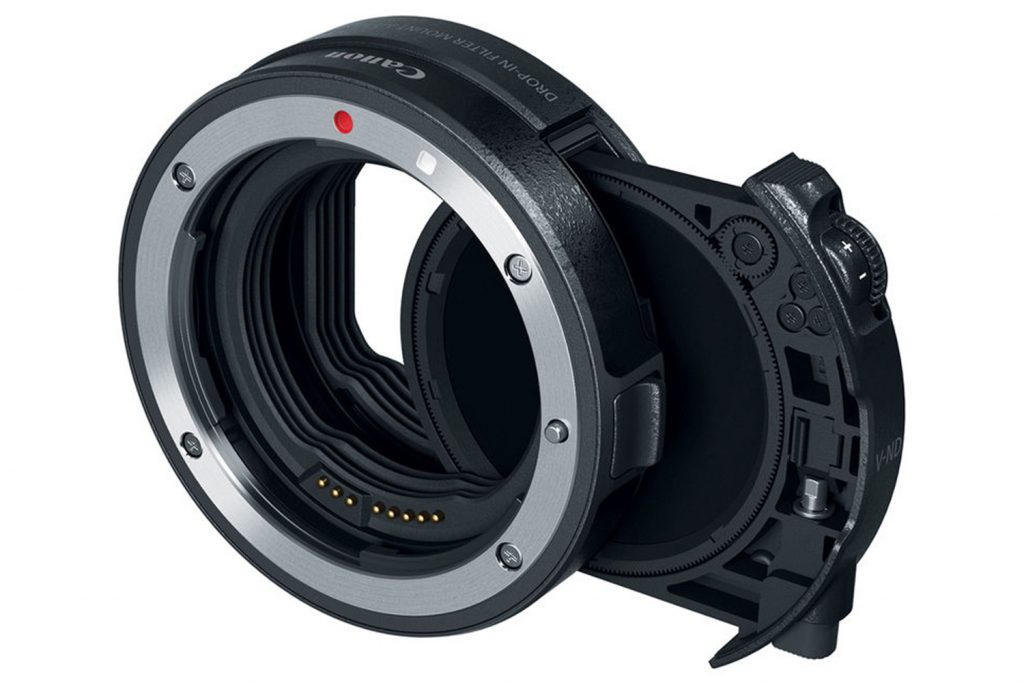
10. Good Battery Life
Last but not least, the autonomy of DSLR outperforms one of the mirrorless cameras because reflex cameras don’t need as much power to feed the constant live view screen. Another reason is that mirrorless manufacturers tend to sacrifice battery life oversize and portability.